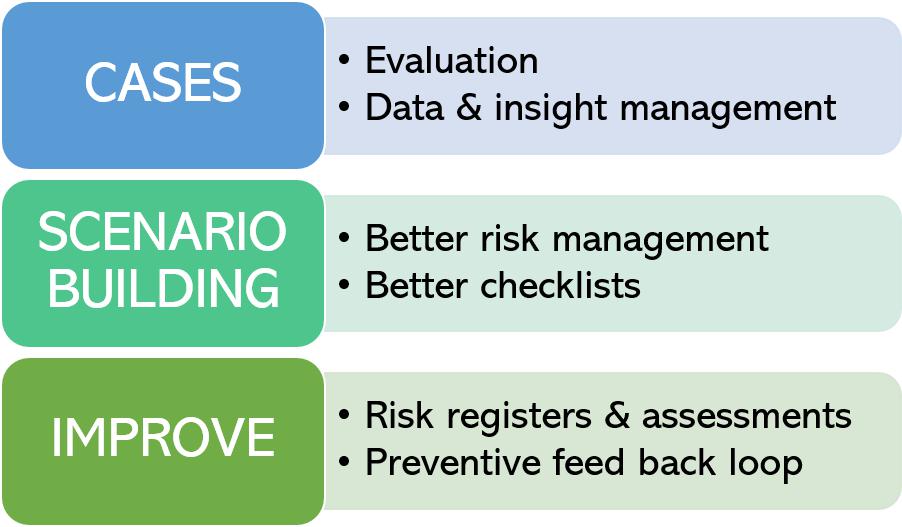Case for predictive analytics for workplaces

Advanced and predictive analytics has revolutionized many industries, and it has laid the foundation for internet search engines such as ‘Google’. We have seen that ‘data-driven’ approaches are gaining grounds; be it shopping and retail websites, ‘cookies’ help predict our behaviour online and analyze our browsing patterns. When predictive behavior is applied, its actions have the ability to create desirable impact on campaigns and retention actions are more successful.
In case of industries, they devote considerable resources to reduce injuries and accidents with their HSE management in place. But yet, in many organizations, safety performance plateaus after an initial phase of improvement; reasons can either be the employee mindset or non-extrapolation of the existing data to shape and sustain safety culture. Predictive analytics brings us one step closer to the vision of sending every employee safe, every day.
Safety inspection data fuel the predictive models in the workplace as they provide actionable insights. Predictions take a broader look at the cause of accidents and injuries, or the workplace as a whole, thus identify structural levers to make better decisions.
For eg. A company uses predictive analytics to pull the data sources together outside its HSE system, including data on production, human resources, and weather. These are the significant statistics derived that were neither measured nor accounted for, perhaps in the company’s original investigating methodology. But they provide raw data needed to drive predictions for the workplace; factors that influence incident levels.
Evaluate, segment and manage using predictive analytics
Industries need to predict for everything; if a project is to be initiated, its success hinges on a range of factors, including its inherent complexity, the team’s capability level and maturity of existing controls and governance process. Increased transparency impacts accountability and this predictive cycle helps to:
- Close the design loop
- Create actionable intelligence
- Use ROI as a platform
One example of existing preventive measure on an industry level is an emergency exit inspection, where the results predict the dangers at exits in case of emergencies. For this, there are safety measures called mock drills that serve the very purpose. Similarly, predictions and evaluations in terms of safety prove essential and safety inspections and investigations stand as cornerstone of safety and risk management programs. Predictive analytics can be used in an equipment or an incident investigation. Their case evaluations helps gain further insights for hazards or uncalled accidents. A well-defined framework presented below can help achieve above mentioned objectives.

Though all the techniques cannot replace the intuition, experience and judgement of a safety professional, access to intelligent predictive tools can help them become more accurate and efficient in their work performance. With their increasing awareness, companies are creating systems to automate most of their processes. Predictions help look beyond the fundamentals of how the systems work and also help examine a long list of workplace indicators. In addition to data from the company’s own experiences (behaviors, incidents), these tools let users drill down to specific task areas and identify areas of greatest risk.
Safety professionals can then guide and make decisions for injury-prevention activities. Predictions, with a high level of accuracy, reduce the risk of future injuries.
Safety professionals, in industries, especially now, need to stop being reactive and start being proactive. We can stop reacting after an incident, instead predict it and prevent it. Because, in today’s age, it is the right and the smart thing to do.


